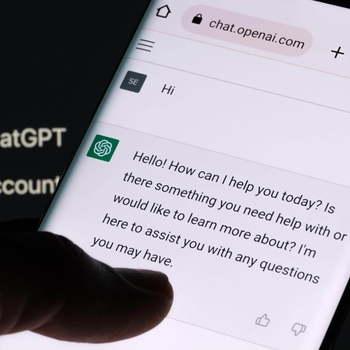How PPC and SEO Work Together to Bolster Performance
by Chad de Lisle • June 4, 2025
Here’s the hard truth: most brands have PPC and SEO teams that don’t talk to each other. Budgets are allocated in silos. Data is kept in silos. And results? You guessed it: limited.
But when you actually look at the buyer journey, it’s not segmented. It’s messy. Buyers bounce between organic search, paid ads, brand pages, review sites, and back again, all in the same session.
So the question isn’t whether these channels work together. The question is: How do PPC and SEO work together in a way that supports the full customer journey?
Let’s break it down.
1. Keyword & Intent Data: Shared Intel, Shared Wins
The first way to align PPC and SEO is through shared keyword and intent data . PPC gives you fast feedback on which search queries actually convert. SEO gives you visibility into long-tail terms and evergreen content gaps.
When these teams collaborate, your keyword strategy becomes smarter:
- Use PPC data to prioritize high-converting keywords in your content roadmap
- Use organic traffic data to discover PPC negatives and avoid wasted ad spend
- Use combined search data to build a full-funnel keyword strategy, from awareness to decision
This is execution in action: one feedback loop, two channels, better targeting.
2. SERP Domination: Take More Real Estate
If you’re running both paid and organic campaigns on the same keywords, you increase your chances of visibility on Page 1 of Google twice.
Why does this matter?
- Users see your brand more often, boosting trust and familiarity
- Click-through rates improve because users perceive authority
- Competitors are pushed lower in the results, reducing their clicks
This is one of the most overlooked answers to “ How do SEO and PPC work together? ” —They don’t cannibalize each other when done right. They complement each other, especially for high-intent keywords that matter most to revenue.
3. Smarter A/B Testing and Faster Learning Cycles
PPC is a real-time testing ground. You can test headlines, meta descriptions, CTAs, and messaging variations, then bring those insights back to your SEO strategy.
For example:
- Test ad copy variations in Google Ads
- Identify which messaging drives the highest engagement
- Optimize your organic page titles and meta descriptions accordingly
Now you’re not guessing what works. You’re using real-time PPC data to inform longer-term SEO decisions.
4. Landing Page Optimization: Unified Strategy, Unified Results
One of the most significant breakdowns in execution is the disconnect between traffic sources and landing page design. Paid ads go to one page, and organic traffic goes to another.
Meanwhile, both perform poorly because neither page fully aligns with user intent.
When you understand how PPC and SEO work together , you start optimizing for the journey, not the channel:
- Use SEO to attract top-of-funnel interest
- Use PPC remarketing to guide that interest to conversion-focused pages
- Use shared page templates or content blocks that align with both traffic types
This creates a cohesive experience, from search term to landing page to conversion.

5. Retargeting: SEO Feeds the Funnel, PPC Closes the Loop
SEO is great for early-stage discovery. PPC is great for retargeting. Together, they create a multi-touch marketing system that meets the customer where they are.
Here’s what that looks like:
- A user finds your blog through organic search
- They read your thought leadership piece, then leave
- They see a retargeted PPC ad later that week, offering a case study or free trial
- They come back, convert, and enter your sales funnel
When people ask, “ How do PPC and SEO work together?” , this is a perfect example: one builds brand trust, the other converts interest into action. Neither is enough on its own.
6. Attribution and Revenue Modeling: Complete the Picture
When your PPC and SEO channels operate independently, your attribution gets messy. You risk:
- Double-counting conversions
- Misunderstanding channel impact
- Over- or under-investing in the wrong areas
But when you integrate both channels into a unified analytics framework, you get a clear picture of:
- Assisted conversions
- True ROI by channel
- Funnel velocity from first touch to close
This gives your leadership team the confidence to scale the budget based on what’s working , not just what looks good on a dashboard.
7. When PPC & SEO Are Aligned, Execution Gets Easier
Let’s go back to the three stages of marketing execution we talked about in our dedicated article:
1. Pre-Website Experience
- SEO and PPC both shape your presence in the SERPs.
- Messaging needs to be consistent between organic listings and paid ads.
- Targeting and keyword alignment need to be in sync.
2. Website Experience
- Users should land on pages that match both the message and the stage of their journey.
- Whether they clicked a blog post or a paid ad, the experience should feel intentional.
3. Post-Website Experience
- Use organic visits to retarget audiences in your PPC campaigns.
- Use conversion data from PPC to refine your organic calls to action.
- Create nurture sequences that speak to both acquisition sources.
Execution doesn’t just mean doing more—it means aligning efforts where it counts. Understanding how SEO and PPC work together is one of the most effective ways to tighten up execution at every touchpoint.
Build One Engine, Not Two
If you want to compete in today’s landscape, you can’t afford silos. The brands that win are the ones that execute across teams, tools, and tactics with shared insight and shared goals.
Knowing how PPC and SEO work together is everything. When those two sides of the search equation talk to each other, your strategy moves faster, your results go deeper, and your marketing engine finally runs the way it was meant to.
At Disruptive, we build systems that work. This starts with aligning every lever of search so your business can grow.
Ready to build yours?





